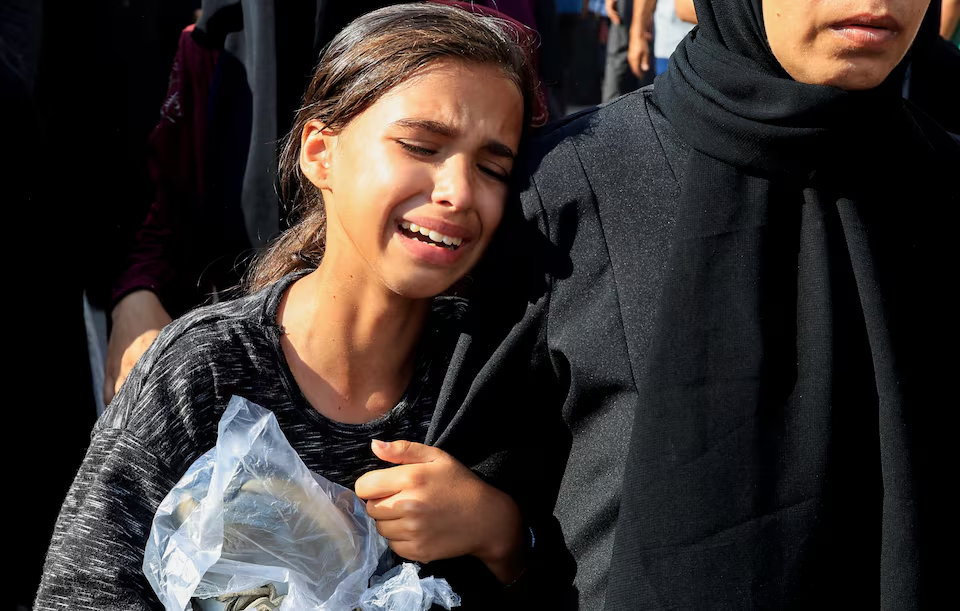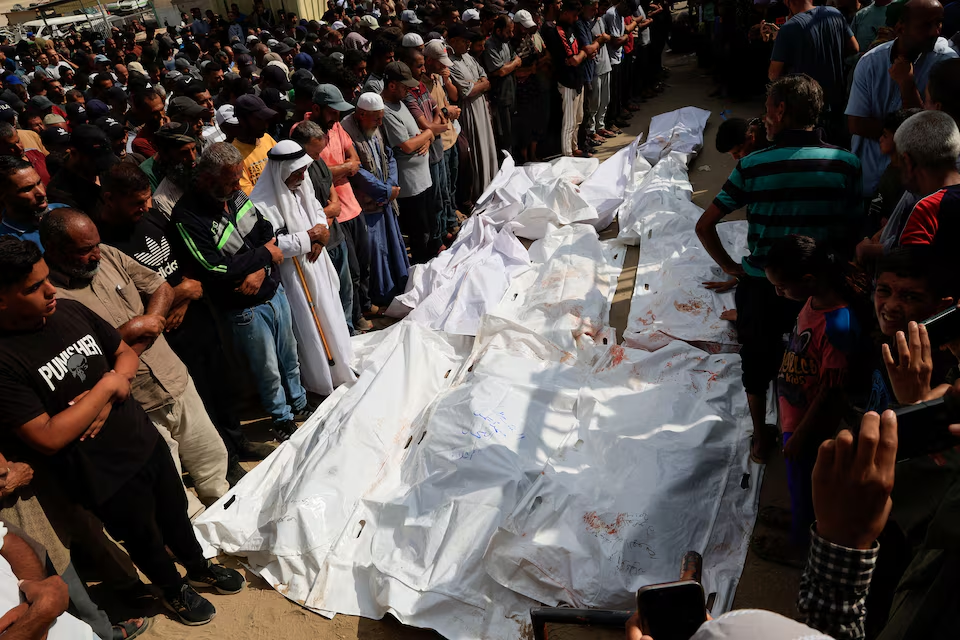Khan Younis, Gaza — What began as a desperate wait for aid in southern Gaza ended in carnage. On Tuesday morning, a deadly stampede at a distribution site operated by the Gaza Humanitarian Foundation (GHF) in Khan Younis killed at least 20 Palestinians, many of them women and children, according to Gaza’s Health Ministry. Witnesses described chaos and screaming as thousands rushed the gates in search of basic rations, only to be met with suffocation and fatal crowd pressure.
Palestinian authorities stated that most victims died from suffocation, while GHF officials reported one additional death due to stabbing. Rather than accepting responsibility, the foundation—funded and backed by the United States and operating with Israeli approval, immediately blamed “armed agitators affiliated with Hamas” for allegedly triggering the deadly surge.
But that narrative is undercut by what humanitarian experts have described as a systematic collapse of neutrality and safety in Gaza’s aid delivery model.

As reported by Reuters, the incident occurred at a major GHF aid hub where thousands had queued for food and water, many of them displaced by Israeli airstrikes. The site lacked basic crowd management infrastructure, medical stations, or enforced safe zones.
According to a damning report via Reuters just days earlier the United Nations Human Rights Office, 798 Palestinians were killed between May 27 and July 7 while trying to access humanitarian aid. Of those deaths, a staggering 615 occurred near GHF-run sites, while 183 died along aid convoy routes. The majority, the UN confirmed, were killed by live ammunition.
“This model of humanitarian delivery fails to meet basic standards of neutrality, safety, and dignity,” said Ravina Shamdasani, spokesperson for the UN High Commissioner for Human Rights, as cited in the same Reuters report.
Rather than engaging with these findings, GHF issued a defensive and accusatory statement, claiming the UN’s figures were inflated and blaming “mob aggression” for deaths that multiple humanitarian groups say were avoidable.
In coverage by CBC News, GHF stood by its model, claiming it delivers food “more efficiently than UN agencies.” Yet the Foundation’s operations have coincided with the highest documented fatality rate in modern humanitarian aid zones, according to independent aid monitors.
A manufactured humanitarian crisis
Critics say the United States and Israel have weaponized humanitarian assistance, replacing multilateral structures with militarized food corridors controlled by political interests. The GHF was created earlier this year with White House endorsement and Israeli military clearance, circumventing traditional channels such as UNRWA, which Israel accuses of bias and the US has defunded.
What Washington frames as “streamlined aid,” observers call disaster by design.
“The Gaza Humanitarian Foundation is not a neutral actor. It’s a geopolitical experiment to test control through hunger,” said a senior UN official on background, echoing concerns from multiple NGOs that have suspended cooperation with GHF.
UN officials warned this month that GHF sites have become “kill zones” due to the lack of safeguards, the presence of Israeli military forces nearby, and untrained local security teams managing desperate crowds.
While the Biden administration claims GHF allows more agile food distribution, it has offered no accountability for the hundreds of confirmed deaths at its aid sites. And although GHF routinely blames Hamas, no evidence has been presented by the Foundation to verify those allegations. Neither the State Department nor GHF management have agreed to any third-party investigation of the July 16 crush.
Collapse of aid and accountability
Gaza’s infrastructure is in ruins. Over 2.2 million Palestinians are displaced, with roads destroyed, food warehouses bombed, and water systems disabled. Amid this devastation, the UN World Food Programme and UNRWA have suspended many operations due to repeated Israeli airstrikes and lack of safe corridors.
As reported by Reuters, the UN has emphasized that humanitarian access in Gaza must comply with international law, including safety guarantees for civilians. GHF, however, continues to operate without external oversight, with Israel maintaining veto power over its routes and site locations.
Meanwhile, grieving families in Khan Younis continue to bury their dead. One local resident, speaking anonymously to local media, described the scene: “My cousin was trampled to death for a bag of flour. The people who claim to be helping us are the ones killing us.”
“Every life lost at an aid site is preventable,” said Michael Fakhri, UN Special Rapporteur on the Right to Food. “This is not a famine caused by nature. This is a starvation policy, enforced through siege and selective relief.”


